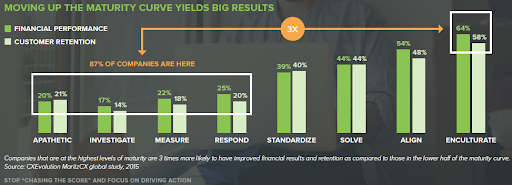Why Listen to the Voice of the Customer?

Are your customers happy? How do you know for sure? If they’re not happy, do you know exactly why and how to fix it?
These are questions that plague businesses of all types, but very few know how to answer them. Even fewer know how to extract meaningful insights from the answers they get.
Customer experience drives your competitive advantage. It's vital for building both employee and customer loyalty and solidifying your brand. That's why you need to be listening not once in a while, but every day.
Customers demand personalized experiences and they’re quite vocal when they don’t get what they want. They can either praise or slam you for all the world to see with a few taps of their fingers.
You'd think all the data out there would make customers and businesses tighter than ever. But that data creates a lot of noise that can be hard to put into context. A strong Voice of the Customer (VOC) program cuts through the noise.
Over a series of three posts this month, we'll explore:
- The 7 Dimensions of Customer Experience
- The 5 Keys to Building a Strong Voice of the Customer Program
- How to Know if Your Voice of the Customer Program Is Working Before you can even think about building a Voice of the Customer program, you need to know your CX maturity.
What is Customer Experience (CX) Maturity and Why Does it Matter?
Similar to UX maturity, Customer Experience (or CX) maturity is a measure of your organization's commitment to a customer-centric mindset. The key difference is that UX maturity measures the user experience with your specific products or services. CX measures their experience with all of your services, products, employees and brand as a whole.
The more you integrate customer experience into your day-to-day operations, the higher you move up the maturity scale. Most organizations, due to a lack of time or resources, are stuck somewhere in the middle. They collect a bunch of customer experience data but don't really know what to do with it or how to integrate it into their organization.
To build an effective Voice of the Customer program, you must increase your CX maturity. At the same time, a strong Voice of the Customer program can improve your CX maturity. It's a symbiotic relationship that pays dividends in business growth.

The more you move up the CX maturity scale, the more customer loyalty and greater financial results you're likely to see. Analysis from the sales and marketing experts at Maritz suggests that companies at the highest levels of their CX maturity model are three times more likely to have better financial performance and customer retention compared to companies in the lower half.

In short, it pays to increase your CX maturity. A best-in-class Voice of the Customer program can transform customer feedback into real business results. But it takes time, money, and especially dedication to get it right. What’s Your Customer Experience (CX) Maturity Level? Our next blog post breaks down the 7 dimensions of customer experience. But to see where you stand in terms of CX maturity, take our free 5-minute CX self-assessment to get a glimpse into how meaningful your current customer experience is.